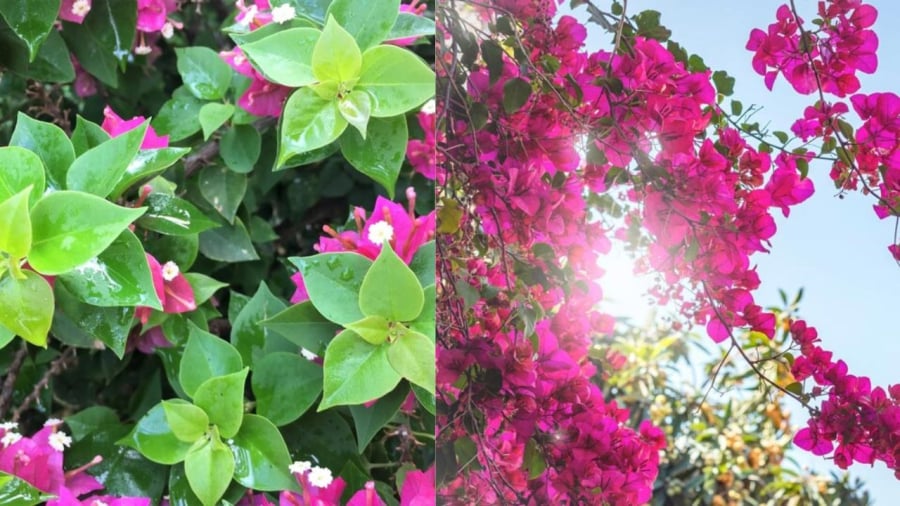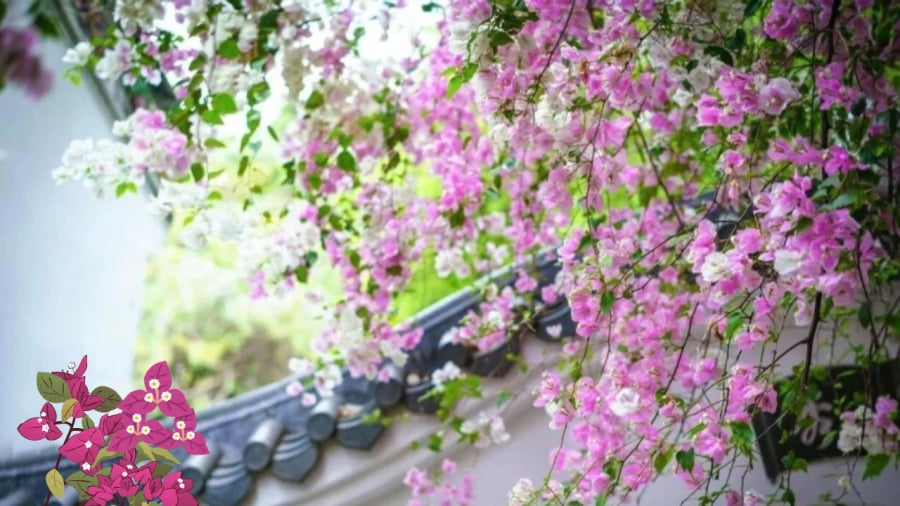What are male and female bougainvillea plants, and how can you tell them apart?
In folk terminology, the term “female” is often used to describe plants with certain characteristics, such as rapid growth, large and round shapes. In contrast, the term “male” is applied to those that are longer, thinner, and slower to reproduce, with less or no reproductive capacity. When it comes to crops, tubers, and fruits, people use the terms “male” and “female” as a familiar way of referring to and understanding these plants, rather than as a standard biological classification.
For example, a large, round potato tuber might be called a “female” potato, while a longer, thinner one would be labeled “male.” The same goes for plants; a tree with few or no flowers that doesn’t bear fruit compared to others of the same type is considered “male,” while one with many flowers and abundant fruit is deemed “female.”
When it comes to bougainvillea plants, you may notice that some plants are covered in vibrant flowers, with leaves barely visible or not seen at all. In contrast, others have lush green foliage with only a scattering of blooms that are obscured by the leaves.

The difference lies in care, not gender
In reality, there is no biological distinction between male and female bougainvillea plants. The abundance of flowers is primarily determined by care and environmental conditions. If you want your bougainvillea to bloom profusely, try the following tips:
Strategies to encourage flowering and reduce leaf growth
Bougainvilleas with lush foliage tend to produce fewer flowers. This is usually due to over-fertilization and over-watering, which goes against the nature of this plant. If you have a bougainvillea with abundant leaves but few flowers, try the following:
– Leaf removal: By removing some leaves, you can redirect nutrients away from leaf growth and stimulate flowering.
– Pruning: If your plant is overly vigorous, prune it back to encourage new growth and reduce nutrient uptake by the leaves.
– Root pruning: You can also prune the roots by digging around one side of the plant to cut off some of the root system, reducing the nutrients available for leaf growth.
– Ring barking: Use a knife to cut a ring of bark to interrupt the flow of nutrients to the leaves, or use a wire to tightly bind the trunk, achieving a similar effect.
– Reduce watering: Decreasing water intake will help reduce leaf growth. Try intermittent water stress by withholding water for about five days and then watering again. Repeat this cycle to encourage flowering.

Adjust nutrients and sunlight for a blooming bougainvillea
Pay attention to sunlight exposure
Bougainvilleas thrive in sunny conditions, and the more sun they get, the more they will bloom, and the more vibrant their flowers will be. Ensure your bougainvillea receives at least six hours of sunlight daily. In regions with abundant sunlight, such as coastal areas, the Central Highlands, and the South, you’ll find bougainvilleas flourishing with minimal care due to the ample sunshine they receive.
Check the soil
While bougainvilleas don’t require highly nutritious soil, there are some things to keep in mind to promote better growth and more abundant flowering. Bougainvilleas are positively phototropic, preferring warm temperatures between 18 and 28 degrees Celsius. Use slightly acidic garden soil mixed with decomposed manure, leaf mold, and pine needle soil for optimal growth. Ensure the soil is deep enough to accommodate the plant’s extensive root system, promoting overall health and abundant flowering.




































